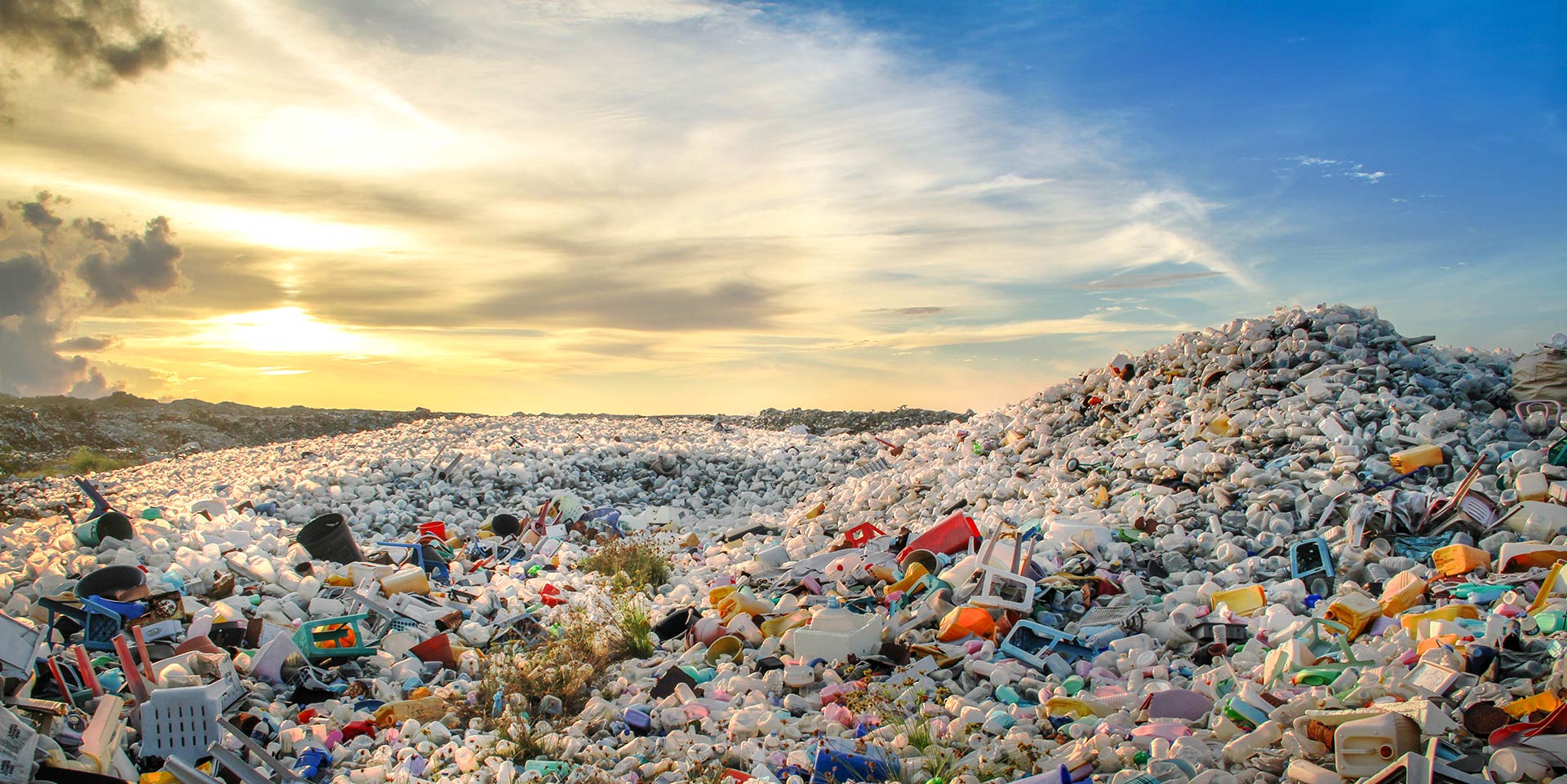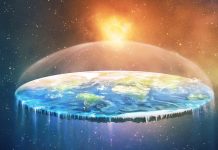“We’ve got all you need, and so much more!” is the tagline that appears in the opening minutes of a famous animated film; a slogan that is not at all disturbing to viewers who have long since become accustomed to the commercials of consumer society.
What may be puzzling, however, is that the ad, with its promises of abundance, is displayed in a deserted hypermarket in a town where not a single inhabitant is left.
As the sci-fi scenes unfold, it becomes clear that the entire planet has drifted away from its natural course. Nothing living (except a cockroach) is left on Earth, after mankind has smothered its only dwelling with rubbish. The bug becomes the companion of WALL-E, a conscientious and unexpectedly sensitive robot, the last of an army of scavenging robots sent to clean up the waste that has made the Earth uninhabitable. Some time later, the robot also discovers a green plant stem that has somehow sprouted from a pile of rubbish—the last vestige of a desiccated planet, which the romantic WALL-E plants in a boot.
The viewer’s eye, accustomed to the richness of reality’s colours and shapes, is struck by images of an Earth transformed into a veritable inferno of waste. Gigantic towers of rubbish bricks creep through abandoned buildings, earthquakes that periodically shake the earth’s crust bring new waves of toxic waste to the surface, while cities where the green wave of grass has disappeared now have piles of PET, glass, and paper as their paving stones. And, ironically, in this kingdom of waste lies a windswept newspaper with bold headlines warning that the accumulation of rubbish has become a problem that threatens to overwhelm the earth.
The filmmaker’s environmental message is largely visual, with few lines of dialogue in a film as silent as the desolate planet it depicts. But that doesn’t make it any less powerful: as certain as it is that we are managing the only planet at our disposal according to the principle of pleasure, it is also certain that there will come a day of reckoning.
And when we look at things in this light, the message of the ads, wrapped in the comforting note of deferred payment, takes on a rather ominous tone: “Buy now, pay later.”
In fact, we have already begun to pay the price for the consequences of modern lifestyles, and there are many similarities between everyday reality and the science fiction scenarios of an Earth choked by waste and pollution. Commenting on the 2016 report of the World Wide Fund for Nature[1], Magor Csibi, Director of WWF Romania, pointed out that we may already be witnessing events that we have projected into the more distant future, such as the decline and even extinction of plant and animal species. The day that tigers, elephants, tuna, or snowdrops (which experts say could become extinct in our generation) become extinct, “we will realise that the way we have built our society is unsustainable.”
There are other warning signs that we are not exactly light years away from the WALL-E scenarios—for example, the fact that in the glorious years of consumerism we have built ourselves gigantic waste dumps that tend to grow at a frightening rate.
The oceans have their nightmares too—some are plastic
A study published in March 2018 brought to light new data on the biggest example of marine pollution—the Great Pacific Garbage Patch, also known as the Pacific trash vortex. It’s a formation made up of a vortex of plastic in the subtropical waters between California and Hawaii. This Pacific island of plastic was first discovered in 1997 by the American oceanographer Charles Moore, who warned that this mass of waste was moving “like a big animal without a leash.”
This massive patch of oceanic garbage has been treated superficially—as it is in international waters, no government has taken on the costly task of cleaning it up. Eventually, environmental activists petitioned the United Nations, asking that the Great Pacific Garbage Island be formally recognised as a country so that it could be covered by Principle 7 of the Rio Declaration on Environment and Development, which requires states to work in partnership to tackle the problem. The project, initiated by the non-profit organisation The Plastic Oceans Foundation and the LADBible website, has attracted many anonymous and celebrity supporters. Former Vice President of the United States Al Gore applied to become the first citizen of the future country, and his initiative was followed by more than 180,000 people. US Secretary-General Stéphane Dujarric said that while the environmentalists’ petition was unlikely to be accepted, it was a creative way of highlighting the seriousness of marine pollution.
Meanwhile, the Great Pacific Garbage Patch has continued to grow, amidst research, petitions, and data collection that have not led to concrete action. It is not visible from satellites, as had been speculated, but is translucent, just below the surface, and of staggering size.
According to the latest study[2], it is 4 to 16 times larger than previously thought: 1.6 million square kilometres, containing at least 79,000 tonnes of plastic waste. Nearly 50% of the waste is fishing nets or other debris from the fishing industry, and three-quarters of the total mass is made up of fragments smaller than 5 centimetres. Boyan Slat, founder of the Ocean Cleanup Foundation, calls the whole waste mix “a ticking time bomb.”
A study led by Cornell University shows that plastic debris, already ubiquitous in the world’s oceans, is making coral reefs sick, ranking second only to ocean warming as a threat to the future of corals. Some 275 million people live near reefs, which are both a source of food and a tourist attraction while also supporting thousands of species of fish and protecting coastlines from wave erosion.
Studying 159 coral reefs in Indonesia, Australia, Myanmar, and Thailand, the researchers found that the Indonesian area was the most polluted, with 26 fragments per 100 square metres of reef, while Australian reefs had the lowest concentration of plastic. Plastic debris can damage corals and also act as carriers for bacterial pathogens in the oceans. The icing on the cake of plastic pollution is the waste’s ability to act as a chemical sponge, attracting other harmful man-made substances such as DDT pesticides and hydrocarbons. In ocean areas where plastic debris ends up, the risk of coral disease increases to 89%, compared to 4% for reefs without plastic debris. The disease is untreatable, warns study coordinator Joleah Lamb, who compares the destruction of coral tissue to gangrene on a foot—once it’s there, it spreads throughout the body.
In fact, plastic kills, sickens or stresses the marine organisms it comes into contact with: according to the UN Environment Programme, plastic debris kills at least 1 million seabirds and 100,000 marine mammals every year.
Microplastics are the most difficult to collect because existing equipment cannot collect fragments smaller than 10 millimetres. Mistaken for plankton, they are often ingested by fish and seabirds and enter the food chain. A study by Ghent University in Belgium estimates that people who eat seafood ingest up to 11,000 small pieces of plastic each year—each a potential harbour for microbes and toxic chemicals.
The situation tends to worsen in the absence of strong waste collection measures, as more and more plastic is dumped into sea waters. Globally, plastics make up 85% of beach debris. A study published in Science in 2015 estimated that between 4.8 and 12.7 million tonnes of waste enters the oceans each year. The equivalent of a full-size truck’s worth of plastic enters the ocean every 60 seconds, according to another 2016 study by the Ellen MacArthur Foundation. The study, presented at the World Economic Forum in Davos, provided data on the worrying ratio of plastic to fish mass in the world’s oceans. While the ratio was 1:5 in 2014, it is estimated that by 2025 it will be 1:3, and by 2050 the amount of plastic in the oceans will exceed the amount of fish.
Innovative collection solutions are being sought so that we don’t have to sail through waves of plastic in the decades to come. Dutch NGO The Ocean Cleanup aims to remove 90% of floating plastic pollution from the oceans by 2040 with its innovative large-scale ocean cleanup system.
But ridding the oceans of plastic, already a Sisyphean task, does not solve the waste problem and could even encourage its uncontrolled spread, as record plastic production perpetuates the cycle of marine and land-based pollution—a production that is in line with the upward trend in demand, because somewhere, sometime, we became dependent on plastic and the comfort it provides.
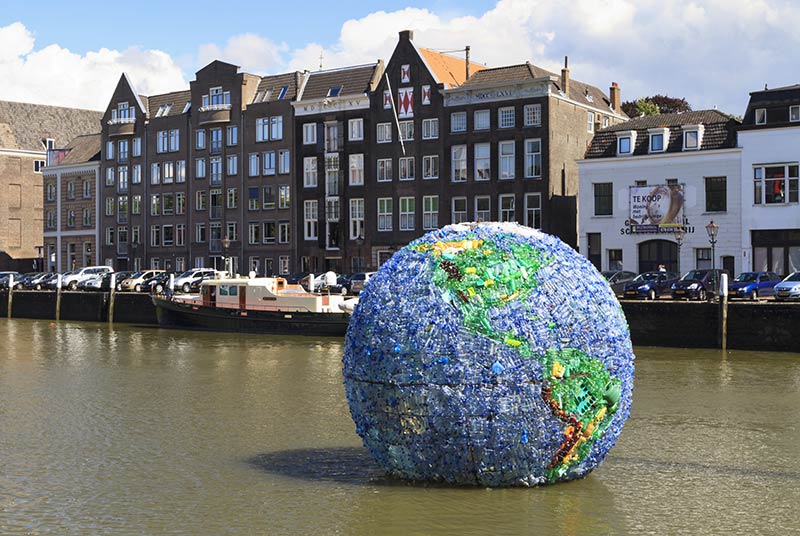
Caught between the production boom and the recycling dilly-dally
We are in a situation similar to that of the legendary King Midas—we don’t turn everything we touch into gold, but we do wrap almost everything we come into contact with in plastic. At least that’s the conclusion of a 2017 study by researchers from the University of Georgia (UGA), the University of California, Santa Barbara campus (UCSB), and the Sea Education Association.
The study, believed to be the first global analysis of the production, use, and fate of all plastics ever made, shows that 8.3 billion tonnes of plastic were produced from the early 1950s to 2015.
The amount of plastic produced in three quarters of a century is equivalent to one billion elephants or 822,000 Eiffel Towers, according to the study’s authors. The rate at which plastics are being produced is staggering: almost half of the total amount has been produced in the last 13 years alone, exceeding the rate and volume of most other man-made products.
But recycling has not kept pace with production: only 9% of the 8.3 billion tonnes were recycled and 12% were incinerated—although incineration is far from ideal as plastics release compounds that are toxic to water and soil. This means that most of the plastic produced since the 1950s (about 80%) is now either in landfills or in the environment for many generations to come, because natural degradation of plastics is an extremely slow process that can take hundreds or thousands of years, according to Jenna Jambeck, co-author of the study and associate professor of engineering at the University of Georgia.
One of the most troubling facets of the plastic story is the contrast between its longevity and the extremely short period of time the product is used by consumers. Mark Hall, spokesman for BusinessWaste, a UK waste recycling company, calls the drinking straw, with a lifespan of no more than 20 minutes, the “ultimate in human wastefulness.” We could also put PET bottles, which also have a minimal shelf life and a highly toxic environmental footprint, in a similar category. According to Euromonitor International, a consumer market research company, one million plastic bottles are sold worldwide every minute, and less than half of these are recycled.
“Half of all plastics become waste after four or fewer years of use,” points out Roland Geyer, associate professor at UCSB’s Bren School of Environmental Science and Management, emphasising that it is precisely because of the discrepancy between the short time plastic is used and its enormous lifespan that we can no longer manage this industry as we have in the past—unless, in his words, “we want a planet that is literally covered in plastic.”
And with one tonne of plastic waste for every person on the planet, it doesn’t take a visionary to see that we’re heading in that direction.
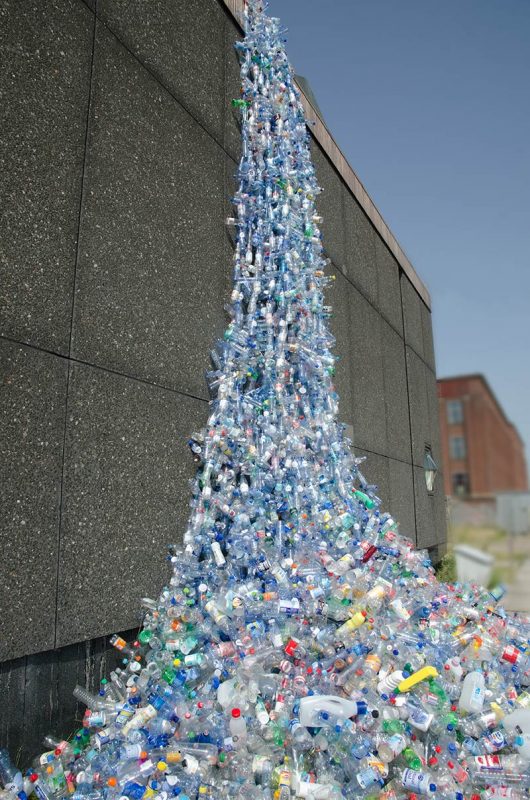
When the price of disposable cutlery isn’t the one on the label
Besieged on all sides by the masses of plastic—a siege most of us find more than comfortable—we give little thought to reducing our dependence on this relatively new product with which many of us have a lifelong friendship. And it would be hard to be any different when a simple trip to the supermarket brings with it at least a few hundred grams of plastic used to wrap food, drink and other items, in addition to the actual products we need. Little by little, the figures add up to a staggering consumption: according to the Worldwatch Institute, Americans use 100 kilos of plastic a year, mostly in the form of packaging, and Western Europeans tick the same box. In Asia, by comparison, the figure is 20 kilos, but it is not stagnating—it is rising as the region’s economies expand.
A store that opened in the Netherlands in 2018 shows that the “plastic switch” can be turned off, at least when it comes to the food it sells. The Ekoplaza supermarket, launched the “world’s first plastic-free aisle” at a branch in Amsterdam, with more than 700 food products (from fruit and vegetables to sauces and meat) without plastic packaging, displayed in containers made of glass, paper, cardboard or a biofilm made of plants.
Sian Sutherland, co-founder of the A Plastic Planet movement, welcomed the initiative, pointing out that “there is absolutely no logic in wrapping something as fleeting as food in something as indestructible as plastic”.
Perhaps the only reason plastic packaging is ubiquitous, apart from the ease of handling, is because of the ridiculously low price of the product; however, it hides another price, which, although not legible on the label, is outrageously high.
In 2016, a study by the World Economic Forum found that 95% of plastic packaging is lost every year, amounting to between $80 and $120 billion. At the same time, 6% of global oil production goes into the manufacture of plastics, with 30 million barrels of oil consumed annually just to make PET, enough to fuel 1.7 million cars for a year[3].
The environmental costs associated with plastics production are extremely high, warns the United Nations Environment Programme (2014). The report states that the financial impact of plastic pollution is $75 billion a year, more than the entire profit of the plastics industry.
Speaking about the exorbitant environmental bill we are paying as a result of our inability to manage the growing waste stream, Tom Szaky, founder of green waste recycling company TerraCycle, stresses the importance of including environmental and health costs in the final price of a product. The externalisation of these costs, which are paid for by society as a whole, is part of the problem, says Szaky, who believes that a viable solution can only be achieved by holding everyone in the consumption cycle accountable.
But behind the actual labelling of plastics lies another cost that may be of even greater concern to consumers than the environmental debate, because the choices they make, especially when it comes to food packaging, affect their health.
Recent studies have questioned the safety of plastic containers, warning that they can affect consumers’ well-being.
A study carried out by the Miguel Hernandez University of Alicante on bisphenol A (BPA), a substance found in many polycarbonate plastic items, showed that this chemical compound affects the endocrine glands and alters the function of the pancreas, causing insulin resistance and diabetes. Bisphenol A is found in a wide range of products, from dental amalgams to drinks containers. It was only banned in the EU in 2011, and only in plastic for baby bottles.
Another study, conducted by Harvard University, reported a 20-fold increase in urinary levels of BPA in volunteers who consumed canned soup. It turns out that the substance, which is suspected of causing various pathological processes, is not even completely eliminated from the body. The study, coordinated by Richard Stahlhut, an environmental health researcher at the University of Rochester Medical Center, showed that BPA persists in the body longer than previously thought: although the amount of the substance decreases relatively quickly between 4 and 9 hours after exposure, it then becomes trapped in the body and has a high potential to cause harm.
However, the dangers are not confined to those containers that use bisphenol A or that are labelled with codes that place them in the higher risk category.
A study[4] published in Environmental Health Perspectives tested nearly 500 plastic food containers. After filling the containers with different foods and heating them from different sources, the researchers found that they left traces of chemicals in the food contents that were unpredictable and not in line with the level of risk claimed by the manufacturers. The results shouldn’t be too surprising, since a plastic item can contain anywhere from 5 to 20 chemicals, some of which are additives that are incorporated into the polymer but not structurally bound, says George Bittner, professor of biology at the University of Texas, Austin campus, and lead author of the study.
There is a lot of information missing from this puzzle of plastic’s health effects, and consumers’ choices can range from cautious suspicion to a firm reliance on manufacturers’ assurances.
As for researcher Richard Stahlhut, by his own admission[5] his choices are cautious. He won’t turn down a Coke in a polycarbonate plastic cup when invited out to dinner, but at home he refuses to indulge in such packaging. This is because he has been studying the issue for a long time and has learned enough to realise that we still know little about the risks of packaging that the industry presents as harmless.
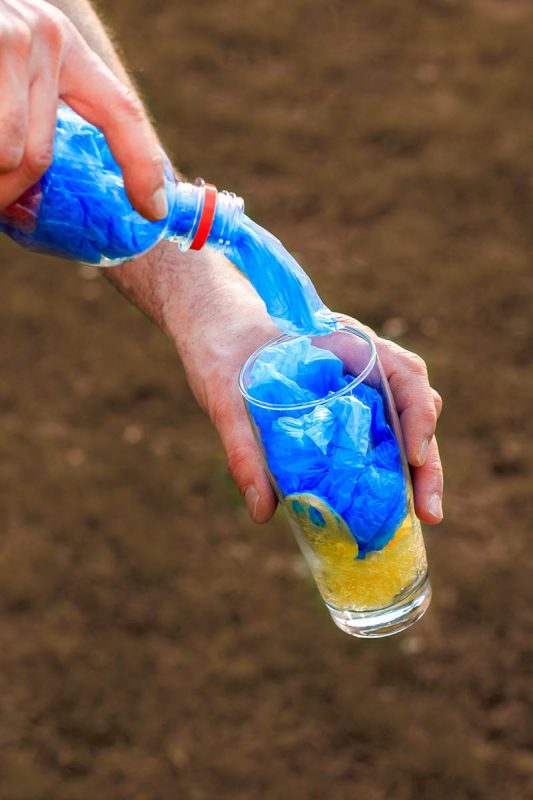
Steps towards integrating plastics into a green economy
On 16 January 2018, the European Commission adopted its first plastics strategy, which aims to make all plastic packaging on the EU market recyclable by 2030, modernise production and collection lines, and limit the consumption of single-use plastic items and the use of microplastics. The EU is also not ruling out the possibility of introducing a plastic tax to discourage irrational consumption.
The new European strategy on plastics was announced against the backdrop of the shock wave caused by China’s decision to ban the import of 24 types of waste from 2018. Since 2000, China has become the world’s largest importer and recycler of waste (including plastics), receiving 56% of the world’s waste plastic exports and 87% of Europe’s plastic waste exports. China’s decision is forcing developed countries to invest more in recycling infrastructure and take more responsibility for the waste they produce—given that Europeans generate 25 million tonnes of plastic waste a year, less than 30% of which is collected for recycling.
Reminding us of the future that studies paint in apocalyptic tones—a future in which we would be navigating through piles of rubbish and plastic waste would outnumber fish—Frans Timmermans, First Vice-President of the European Commission, announced Brussels’ intention to eliminate “single-use plastics that take five seconds to produce, you use it for five minutes and it takes 500 years to break down again.” Timmermans pointed out that education is a key component in changing consumer attitudes, stressing that even children can give up disposable straws, bottles, and cups if they are given effective environmental education, especially by parents.
Instead of mortgaging our future, we could start investing in it, but the big challenge in reversing the trend is to reshape the provincial and consumerist mindset with which we operate. That’s the message from Dianna Parker, communications specialist for the National Oceanic and Atmospheric Administration’s Marine Debris Program, in an interview that highlights the scale of the environmental problems caused by plastic waste. Estimates show that it would take 67 ships working for a year to collect 1% of the plastic debris thrown away in the North Pacific alone—a task that is both overwhelming (if you extend it to all the marine waters affected) and pointless (even if we do manage to rid every metre of the ocean of this toxic ballast) as long as the rubbish continues to accumulate in areas that have just been cleaned up. That’s why Parker argues that changing individual behaviour could be the starting point for breaking out of this vicious circle: avoiding excess, minimising loss, reusing products that are still functional, and persistently recycling rubbish.
All that remains is to identify the levers needed to convince individuals of the need to act now to avoid tomorrow’s environmental disaster (or, as some say, at least to delay it or break it up into manageable crises). A difficult enough task, since the inhabitants of the planet (especially those in countries with a large ecological footprint[6]) seem to have been frozen in the indolence of Madame Ranevsky, the Chekhovian character who loses her family’s old estate, with its treasured memories and its cherry orchard blooming for the last time.
Chekhov, like other Russian playwrights, is said to have had a prophetic touch, able to foresee the future. Whether this is the case or not, we could easily see ourselves in the scene that unfolds on the day of the auction: the butler serving tea and soda, the guests chatting or flirting, the couples waltzing, the orchestra playing (no one really knows who is going to pay them), while the hosts talk a lot without any real purpose, and Ranevsky waits for a miracle to wipe out the estate’s debts. And above all this mixture of frivolity and fatalism, which celebrates nothing but a foretold disaster, one can already hear the axe blows of the new master, whose negligent pragmatism sees no sense in a blooming orchard, even of cherries.
The curtain has not yet fallen on a planet so damaged by human activity that it is claimed we have entered a new geological era. We still have time to enjoy the spectacle of a world steeped in beauty, and to save it from all that is not yet inevitable. We just have to be alert enough to hear the whoosh of the axes and stop them in time, even the plastic ones.
Carmen Lăiu is an editor at Times Romania and ST Network.












